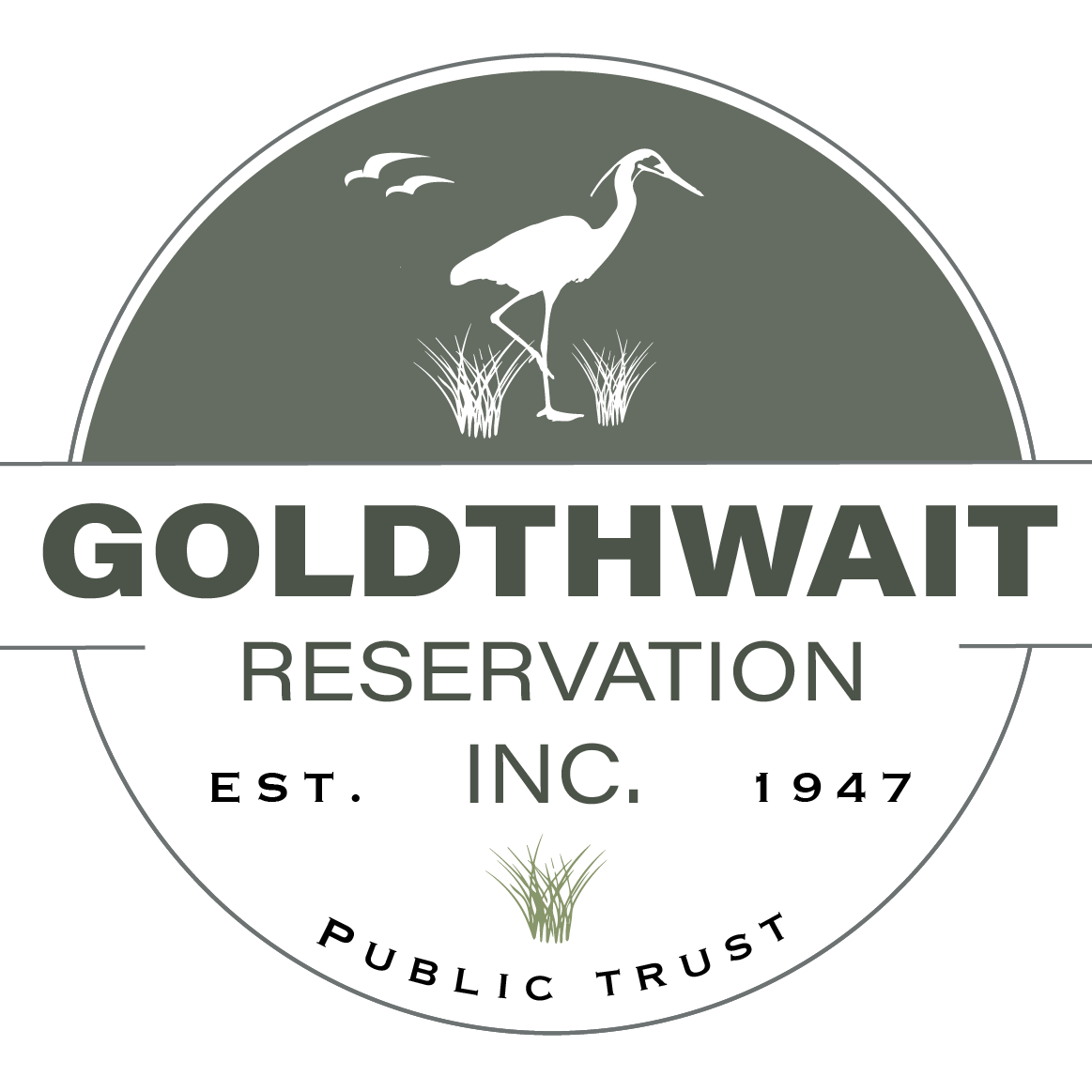PROTECTION
Every year, members and volunteers of Goldthwait help to reduce the accumulation of trash in Goldthwait’s marsh and beachfront area by participating in an annual spring cleanup. The debris that accumulates over the winter ranges from lobster pots to abandoned or destroyed floats to a plethora of plastic materials. Much of this debris gets washed ashore during winter storms, but some can occur from improperly disposed garbage. The clean-up efforts, combined with annual reparations to the boardwalk, and pruning and cutting of the park shrubs, help beautify the area, protect the wildlife, and prepare the area for the summer recreational season. You can help do your part to protect and preserve the ecology of Goldthwait’s beach front, marsh, and property by observing a carry in/carry out trash policy and avoiding the use of glass products that have the potential to break or plastic and paper products that have the potential to be blown away.
RESTORATION EFFORTS
Park Area
In 2011, a major restoration of the park gathering area was undertaken with the help of generous contributions and hard work by many volunteers. What was once unsightly pipes and old asphalt was transformed to a grassy park to be used and enjoyed by all residents. Blueberry bushes, serviceberries, and additional rosa rugosa were planted to create a more attractive area. A stone sitting area with center fireplace was installed to create a natural gathering area. Native shrubs of beach plums, serviceberries, and rosa rugosa were also installed within a long rectangular island in the center of the parking lot.
Salt Marsh
Restoration efforts are constantly underway in the salt marsh to remove the invasive plant species that threaten to out-compete the native salt marsh vegetation. Common Reed (Phragmites australis), an invasive wetland plant that flourishes in freshwater and brackish tidal wetlands, is abundant around the perimeter of the Goldthwait marsh. Phragmites displaces native wetland plants, alters the hydrology, and blocks sunlight to the aquatic community. In addition, the rhizomes can extend down over 6 feet to reach ground water and can grow horizontally to form dense mats that deter other plants from becoming established. Efforts to cut, mow, and remove Phragmites are performed during the summers and will continue to be an annual maintenance measure to ensure the health of the salt marsh, as well as to reduce the fire hazards associated with the growth of this plant near residences.
Another invasive plant that takes the opportunity to encroach into the brackish waters is Japanese Knotweed (Polygonum cuspidatum). You can easily find this shrub on the northwest side of the marsh growing in thick impenetrable stands up to 10 feet high. The semi-woody stems are hollow and have the appearance of bamboo. Japanese knotweed spreads quickly by both underground rhizomes and seeds and easily excludes native vegetation from growing. Once established, this plant is extremely hard to eradicate. Efforts to cut and remove the knotweed have been extensive during the summer seasons with volunteers, summer employees, student groups, and a hired consultant group aggressively cutting and removing the plant. Japanese knotweed is actually edible and nutritious�some of the cuttings were taken to the Franklin Park Zoo and used as forage for many of the herbivores, such as the giraffes.
The growth of both these species around the perimeter of the marsh is evidence of the infiltration of fresh water from local runoff. Too much fresh water dilutes the saline conditions of the marsh and allows invasive plants to establish a foothold and choke out the native salt marsh grasses. The fresh water that pools around the perimeter of the marsh also provides a breeding ground for mosquitoes. To maintain a consistent tidal flow to all areas of the marsh, efforts have been underway to clean out ditches, remove debris, and help maintain the height of the marsh at high tide levels. Efforts to reduce the quantity of stormwater runoff and number of storm-drain connections are also undergoing.
ADDITIONAL RESOURCES
- Pull the Plugs: How A Simple Move May Help Plum Island Salt Marshes Adapt To Sea Level Rise, a WBUR article (July, 2019).
- What’s Damaging Marshes on U.S. Coast and Why It Matters, an article published by the Yale School of the Environment (December, 2012).
- A Volunteer’s Handbook for Monitoring New England Salt Marshes, a handbook developed by the Massachusetts Office of Coastal Zone Management as a tool to help local volunteer groups collect and record data on salt marsh health in a consistent and scientifically sound manner (May, 2002).
- Salt Marsh Restoration, an initiative of the Association to Preserve Cape Cod.

